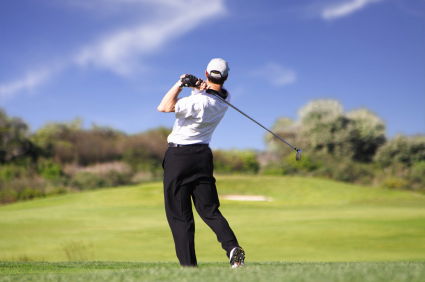 One of the best-kept secrets in health care today is the strong connection between lower back pain and tightness in the hips. While there is a great deal of information available about causes of and treatment for lower back pain, this dynamic is rarely mentioned. Web pages for the Mayo Clinic, WebMD and the National Institutes for Health, leading authorities on health and medical issues, are all silent on how the hips factor into this common health problem.
One of the best-kept secrets in health care today is the strong connection between lower back pain and tightness in the hips. While there is a great deal of information available about causes of and treatment for lower back pain, this dynamic is rarely mentioned. Web pages for the Mayo Clinic, WebMD and the National Institutes for Health, leading authorities on health and medical issues, are all silent on how the hips factor into this common health problem.
Most of the conversation about the lower back revolves around issues in the lumbar vertebrae and the sacrum. Comprehensive assessment and treatment, however, must take into account the correlation between the lower back and the amount of tension and tightness in the hip/pelvic area. For example, a lot of golfers are unable to get a correct golf swing due to the tightness in their hips. In this case, the lower back is going to be compromised because it is twisting while also being arched. This is a recipe for disaster. There are many other examples where the limiting factor is the tightness in the hips but the problem is experienced in the lower back.
The thing with hip/pelvic tension and tightness is that it can exist for a long time completely under the radar. You may not experience pain or discomfort in the hips despite the existing tightness. So how do you know if your hips are tight?
One way to find out if the problem lies in the hips is if you have trouble sitting in the correct seated position. Sitting incorrectly tightens  the hips absolutely while correct sitting relieves tension. For this reason I use sitting as a test. An individual should be able to sit comfortably on a chair or in a car with the hips pushed back and the torso shifted forward. This is the right position.
the hips absolutely while correct sitting relieves tension. For this reason I use sitting as a test. An individual should be able to sit comfortably on a chair or in a car with the hips pushed back and the torso shifted forward. This is the right position.
Another test I use is a hip stretch. I prefer the seated pure hip position. At Dorfman Kinesiology we frequently use this stretch to assess a patient’s level of hip tension and mobility. Another indication of hip tightness would be the existence of any sciatic issues or issues with the butt, such as when sitting is uncomfortable.
Right now I am working with two very active men in their 40’s. They both do manual labor, as well as bike hard and surf hard. And they both have seriously tight hips. Yet it was lower back pain that brought them both to my office. To resolve the pain, I work a lot on the hips and help them with stretching and postural alignment that focuses on this area. Although I also help their backs feel better through massage, the relief would be short lived without addressing the hips.
While men generally have tighter hips than women, women are in no ways immune to this problem. Female runners and bike riders, for example, frequently experience tightness in their hips, which leads to lower back pain. To avoid problems in the lower back these athletes need to be vigilant about doing hip stretches. Yet you need not be an athlete to have tight hips as this tension also affects those who are more sedentary and sit a lot for school, work or travel.
 Even children are dealing with tight hips these days. They are sitting more than previous generations, with worse posture. And those who are active are rarely encouraged to stretch or are given insufficient or incorrect instruction. For example, the classic straight-legged “touch your toes” stretch is quite useless. And can actually do more harm than good. The knees must be bent in the attempt to touch the toes in a standing or seated position or this stretch will do absolutely nothing to address the hips and back, the two areas most in need of stretching.
Even children are dealing with tight hips these days. They are sitting more than previous generations, with worse posture. And those who are active are rarely encouraged to stretch or are given insufficient or incorrect instruction. For example, the classic straight-legged “touch your toes” stretch is quite useless. And can actually do more harm than good. The knees must be bent in the attempt to touch the toes in a standing or seated position or this stretch will do absolutely nothing to address the hips and back, the two areas most in need of stretching.
If you are one of the many who sit a lot and want a proven, easy-to-use stretching routine for your lower back and hips, check out my Lower Back Basics program. If you are more active, Flexibility Training is perfect for you. Both of these programs (and more) are also available digitally thru the free Brian Dorfman app.
In many ways, the ideal approach for preventing lower back issues is to maintain mobility in the hip muscles through stretching, correct postural alignment and massage. Mobility in the hips allows the lower back to extend. This extension works to both prevent and remedy lower back problems. So, stay lose, stretch your hips and your lower back will feel better forever.
